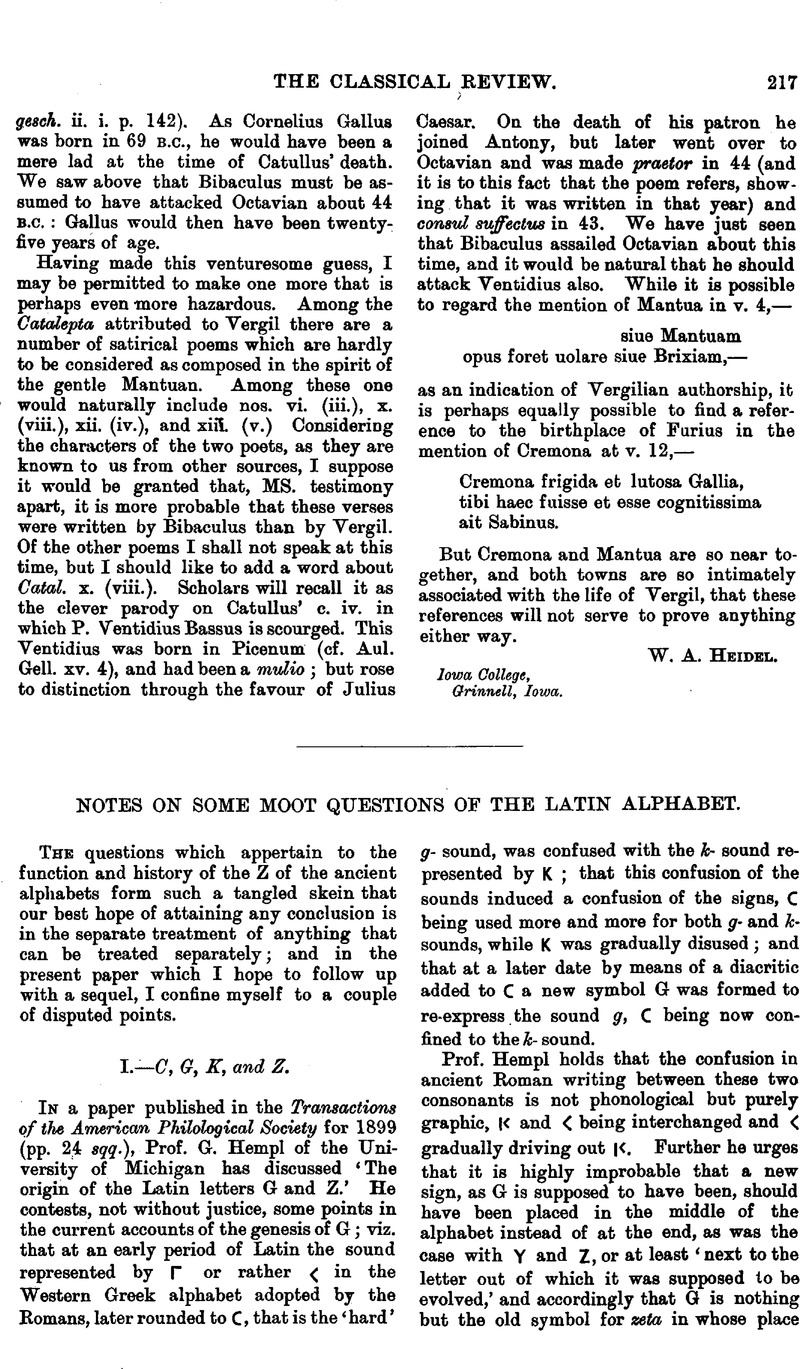No CrossRef data available.
Published online by Cambridge University Press: 27 October 2009

page 218 note 1 This form is a pis aller, used for typographical convenience.
page 218 note 2 And least of all the voiced s which the writer seems to have in mind.
page 219 note 1 I omit two sentences in which Professor Hempl contends quite correctly that the reference cannot be to a Latin Z representing the voiced sibilant s.
page 219 note 2 This often produces an indistinctness in the expression, as in the passage quoted from the Digest. The confusion of ‘letter’ and ‘sound’ has by no means been yet eradicated, as every teacher of Comparative Philology knows.
page 219 note 3 In Shakespere, King Henry VI., Second Part, III. iii. 24 (of Cardinal Beaufort on his death-bed), ‘See how the pangs of death do make him grin’; and in Lucretius, 6. 1195 grinning is a sign of a patient being in extremis. But these parallels are not near enough. On the other hand in Persius, Sat. 3, 101, ‘dentes crepuere retecti; uncta cadunt laxis tunc pulmentaria labris’ (as a medical friend suggests), the doomed glutton is attacked by a fit, and would not die for two or three days after.
page 219 note 4 It is impossible to pronounce either þ or ð without baring the teeth, at least partially, as any one can convince himself.
page 219 note 5 Havet, M. L., Mémoires de la Société de Linguistique, iii. p. 195Google Scholar, supplies me with an argument as excellent against the hypothesis that the ‘Claudian Z’ was dz or zd as against the hypothesis that it was ts, which is the object for which he uses it. ‘Si Appius ne trouvait sinistre ni le son simple du t ni le son simple de l's il ne devait pas tronver sinistre le son du groupe ts.’ Quite so. And similarly he would not have found the sound of the groups dz or zd ‘sinistre’ either: for the enunciation of le s sonoreonly differs from that of le s sourd in the action, of the unseen vocal chords.